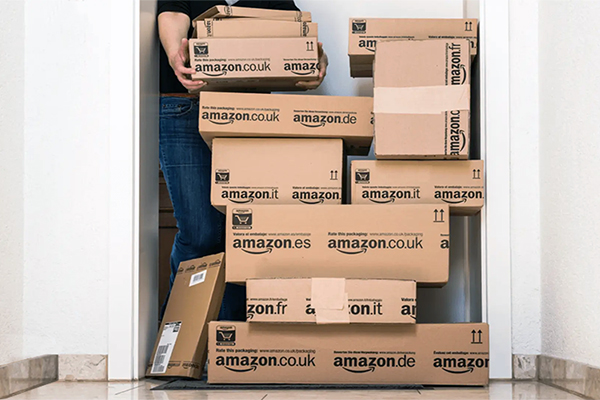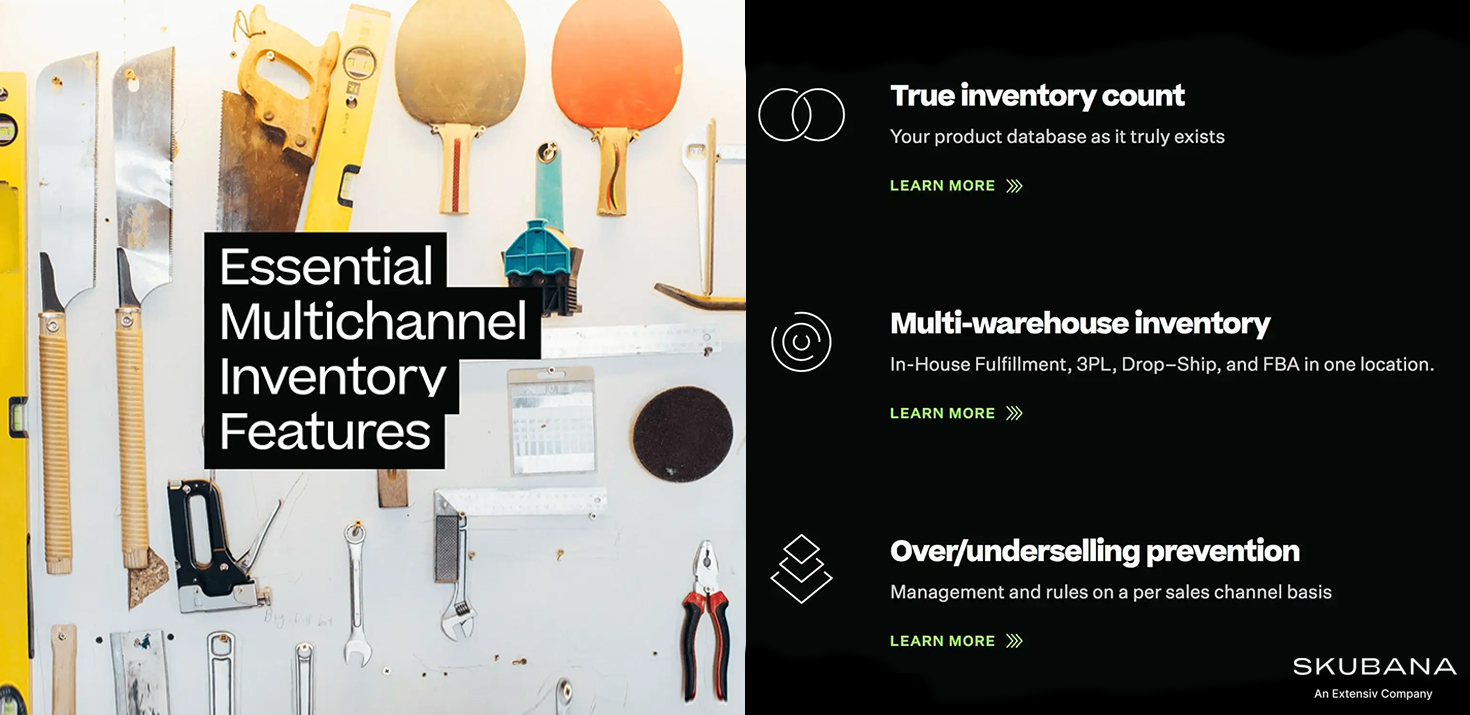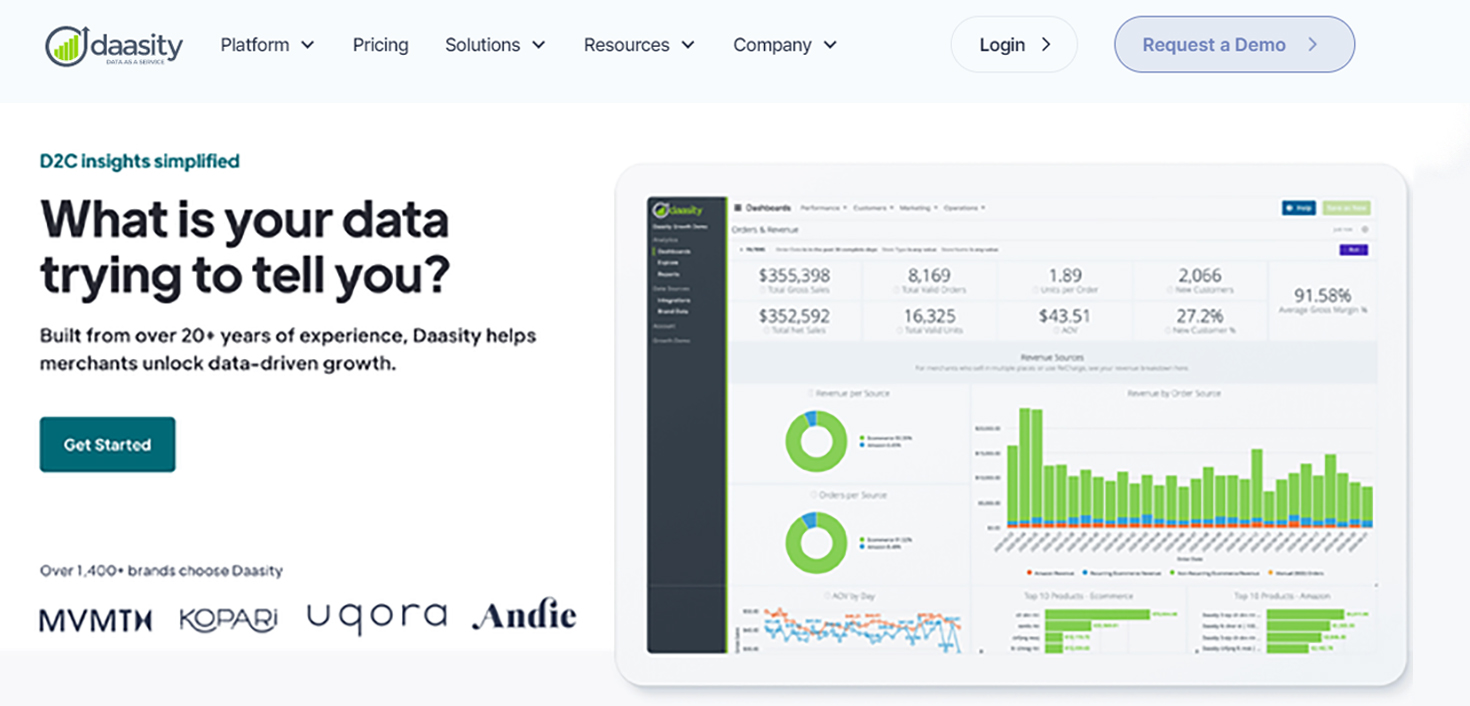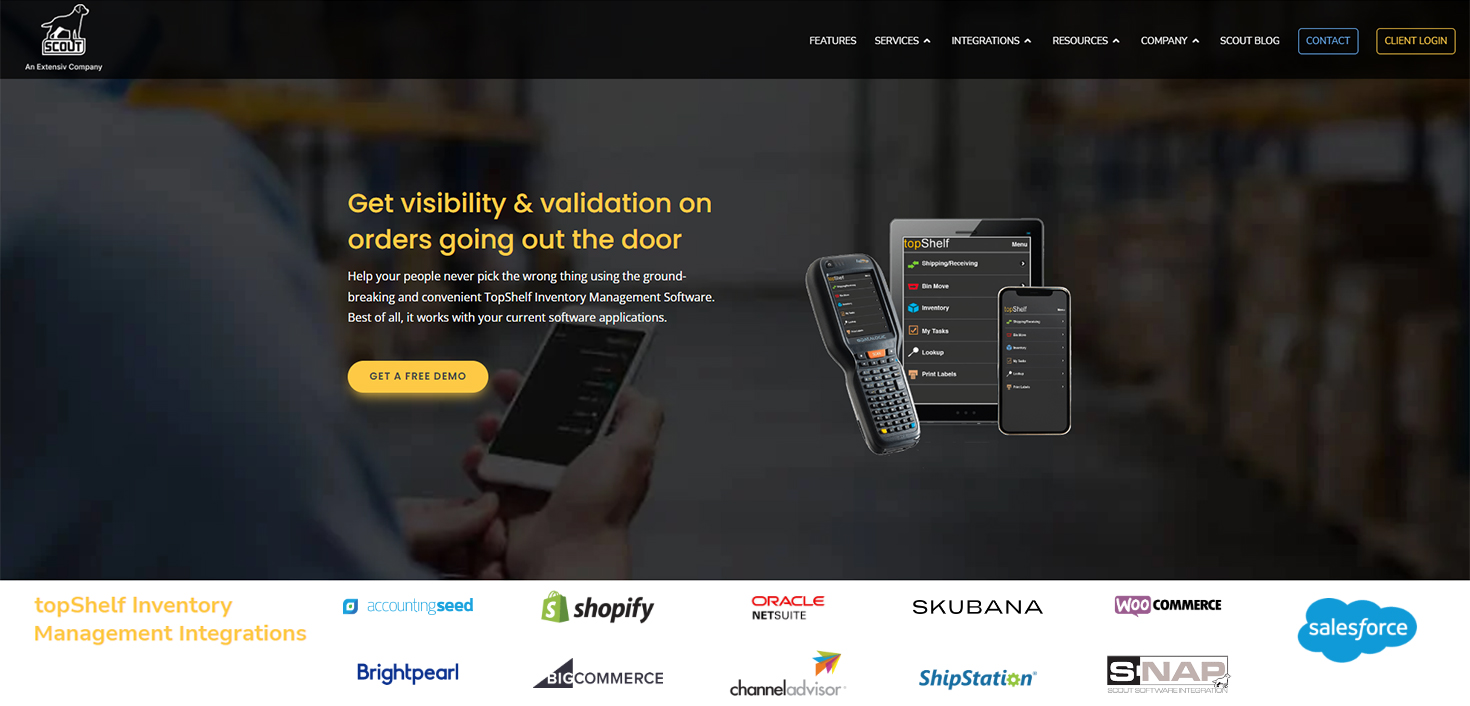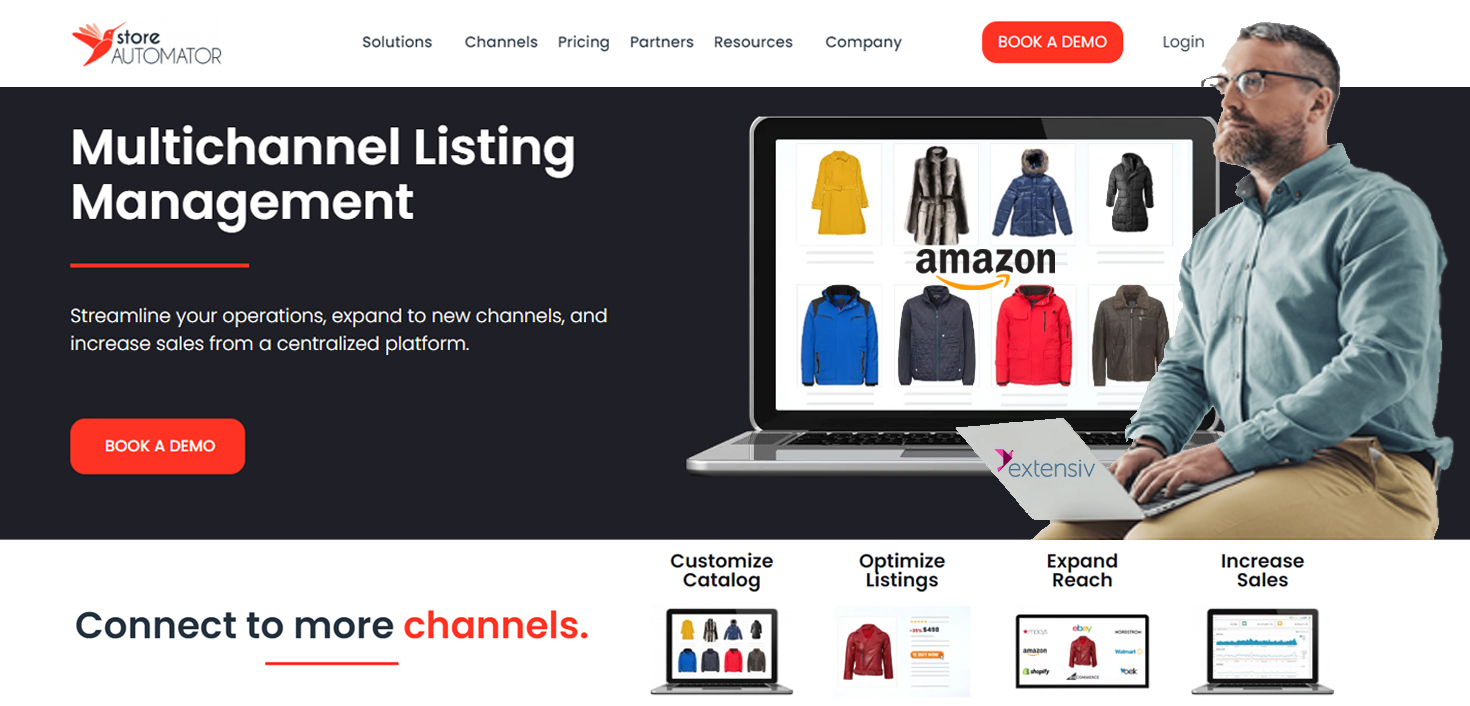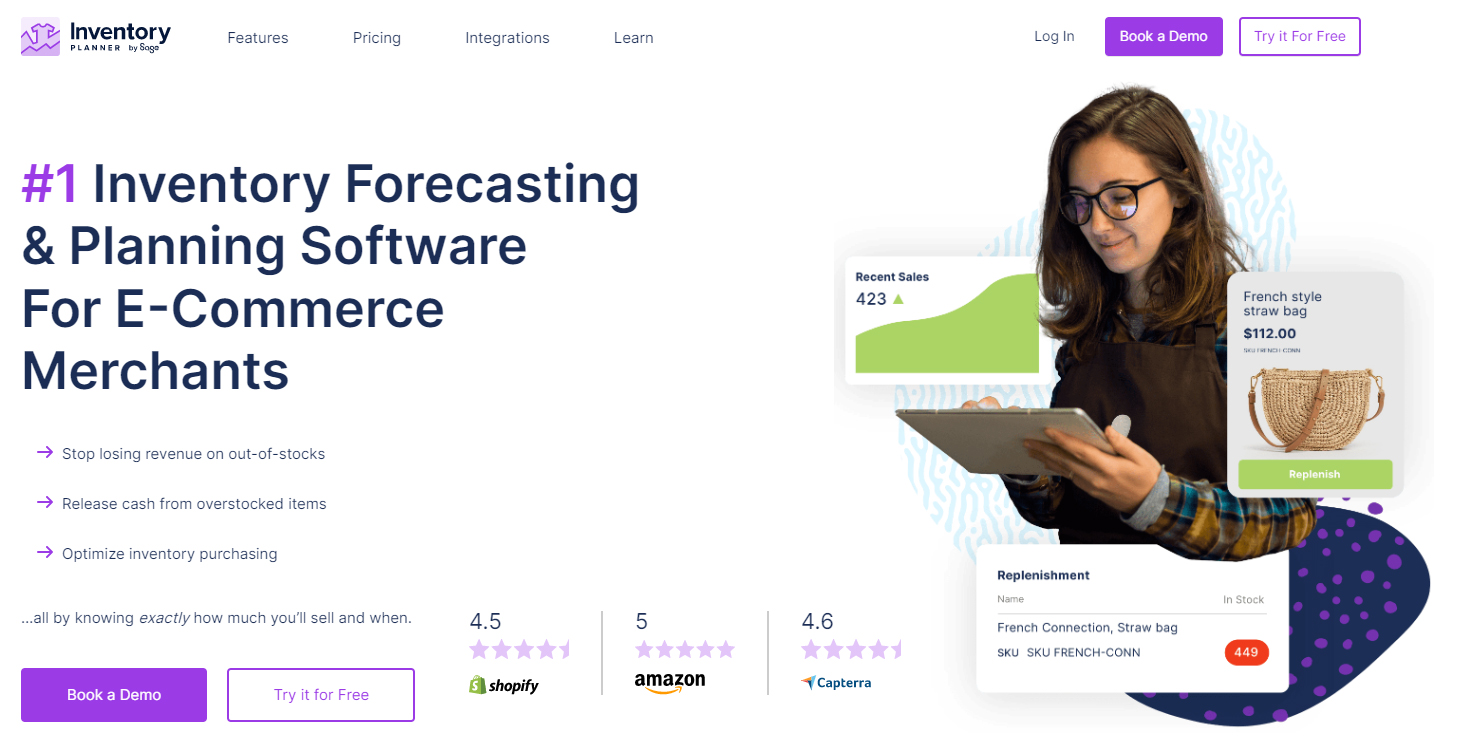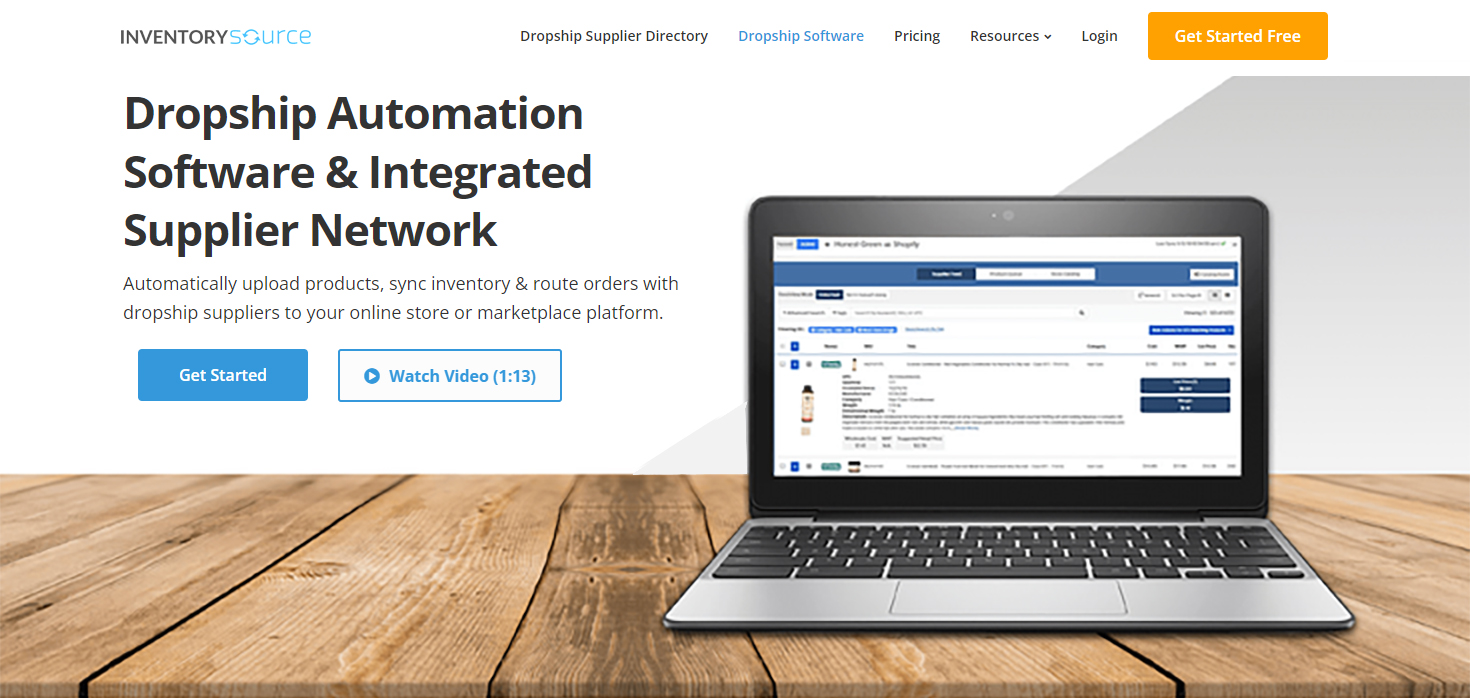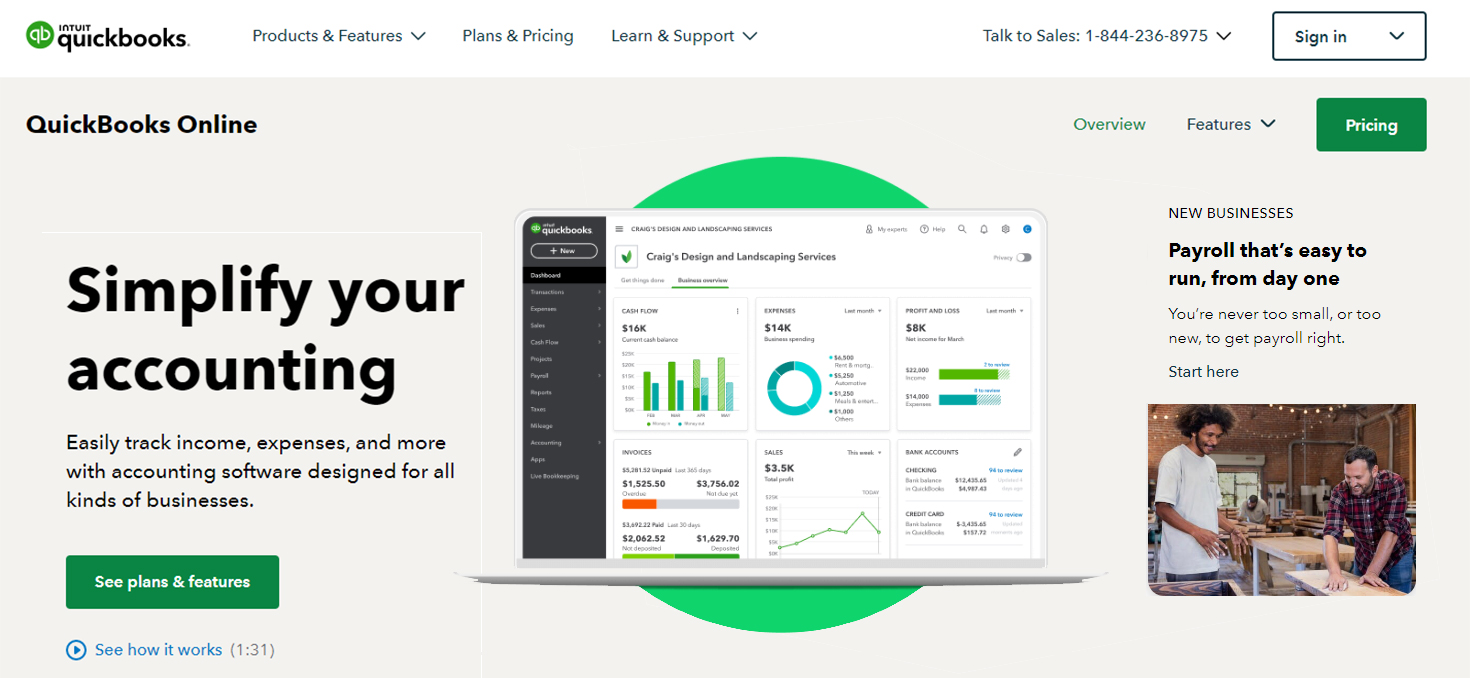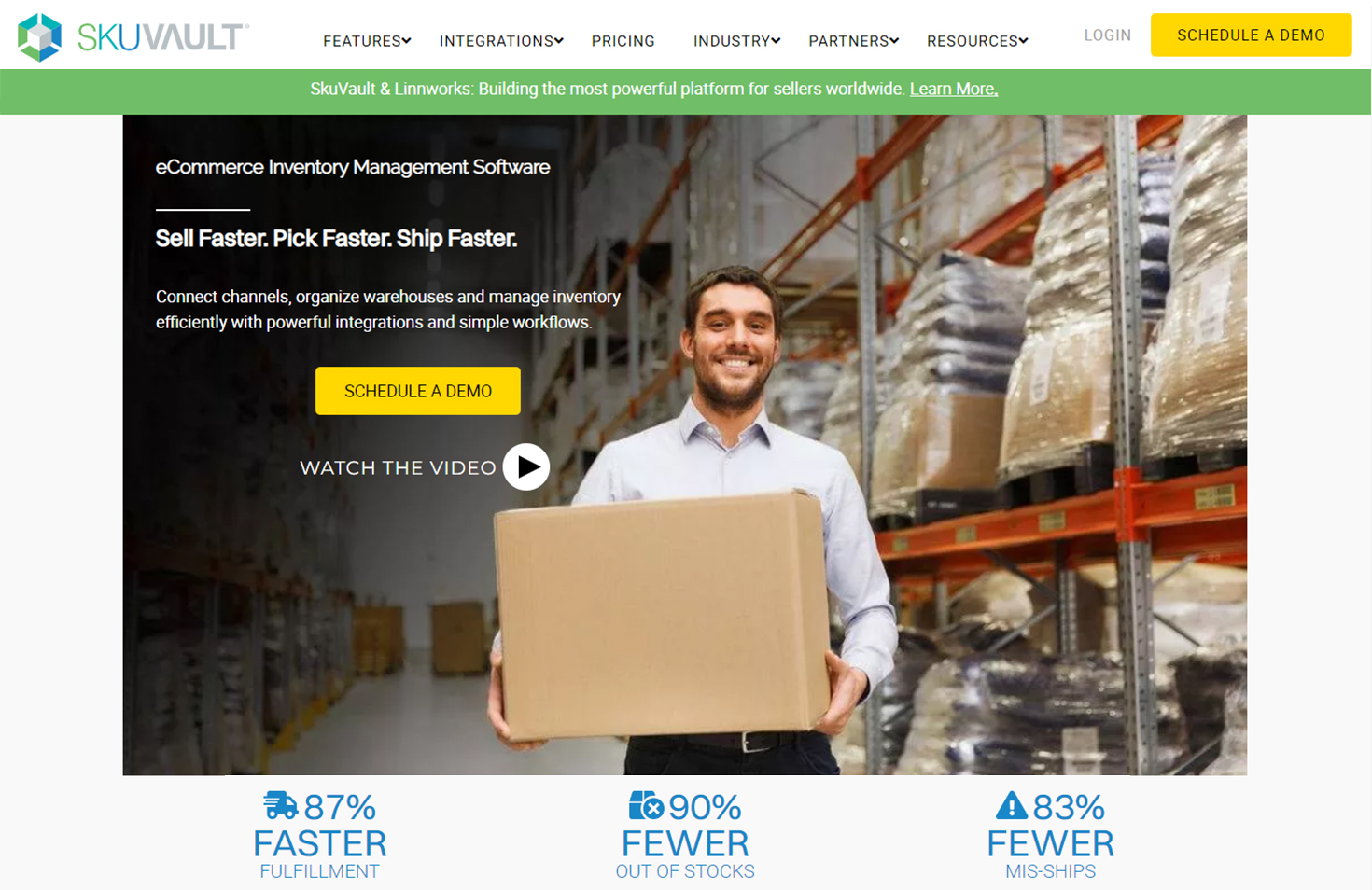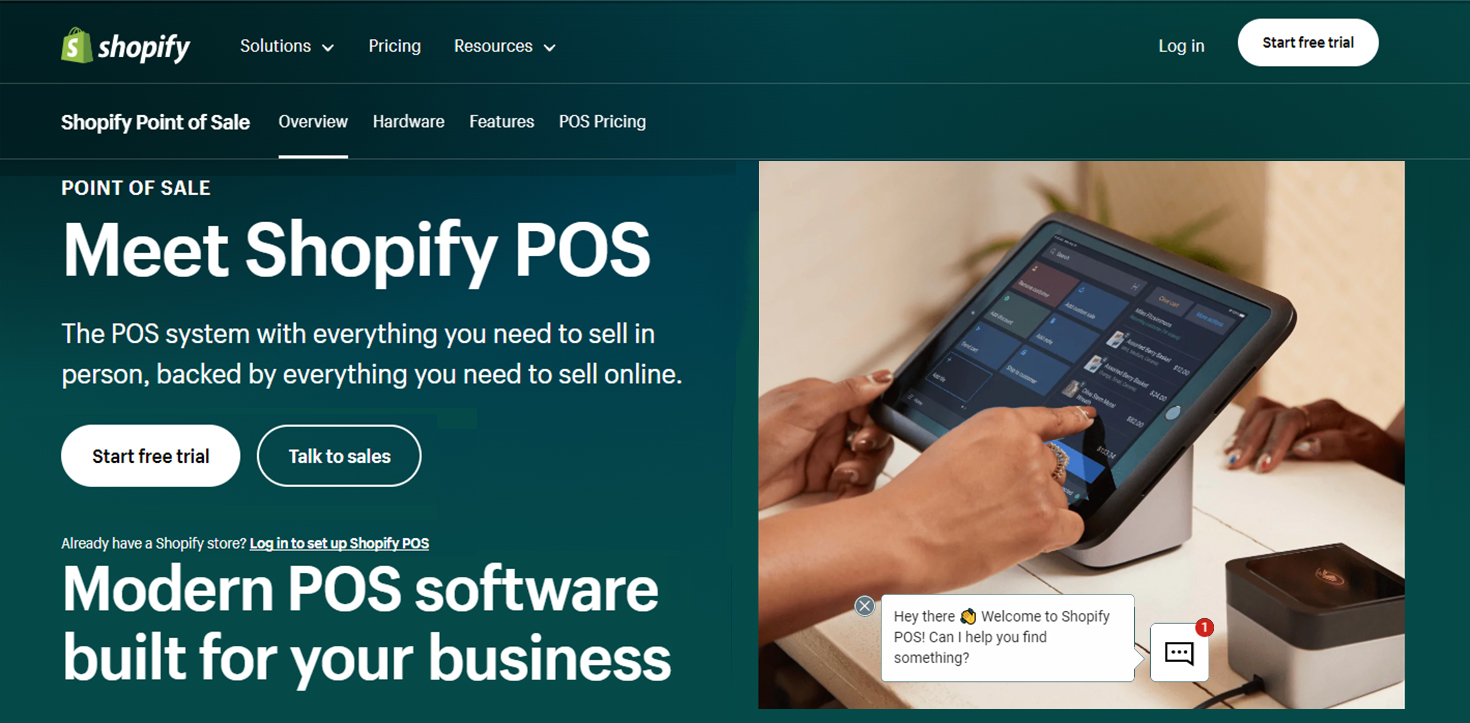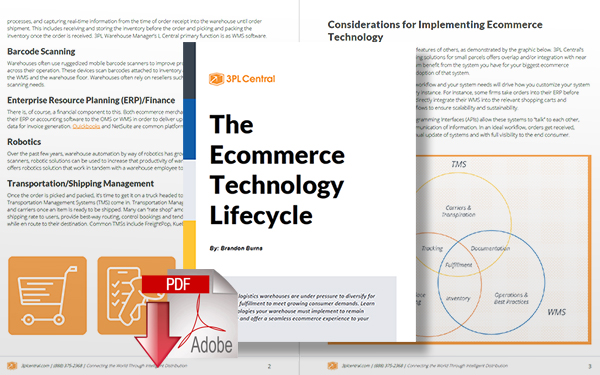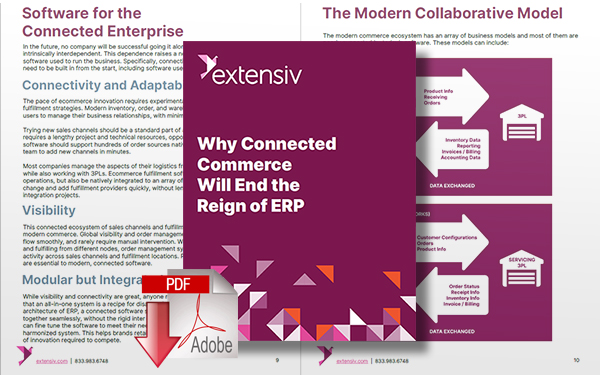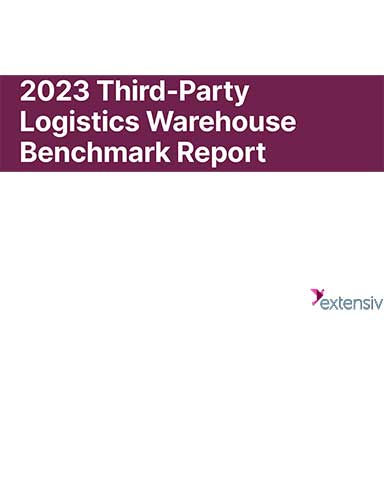Amazon Order Management Explained plus 9 Best Solutions

The extensive size and popularity of Amazon’s marketplace pose unique challenges for its many merchants, from attracting customers and securing conversions, to fulfilling orders and managing your bottom line.
The Amazon Platform
As one of the largest companies and employers in the world, Amazon’s influence is not to be underestimated.
That’s why if you sell products online, you’ll probably want to consider joining the Amazon platform.
Read Amazon's “Inventory management 101: essentials for ecommerce businesses”
Whether you sell portable phone chargers, gourmet pickles, or high-end cosmetics, having the right stock levels in place to meet demand can help keep your business humming.
But Amazon’s influencer can feel like a daunting task, regardless if you’re a veteran ecommerce brand or you recently purchased your domain.
The extensive size (and popularity) of Amazon’s marketplace poses unique challenges for its many merchants, from attracting customers and securing conversions, to fulfilling orders and managing your bottom line.
Shop owners need to have command over their inventory, keep accurate stock counts, and be sufficiently prepared for the ebb and flow of customer demand.
Fortunately, with the help of Amazon order management software, any seller can make Amazon work for them, and give their customers the best possible experience.
What is Amazon Order Management?
Amazon order management is software that supports all stages of the order management process on Amazon and other channels.
This process begins when a customer purchases an item from Amazon and ends when the order is shipped and fulfilled.
The main benefit of Amazon order management is the ability to oversee all order information on a single dashboard.
Amazon order management tools automate the work and are useful for retailers that manage inventory across multiple channels.
Amazon’s Order Management Basics
Amazon’s order management tools and processes help merchants engage with their customers and optimize their product listings.
By leveraging these resources and other management tools, business owners can take control of their orders and ensure greater customer satisfaction overall.
Managing Amazon Orders
With the Manage Orders tool, Amazon sellers can see a list of their current orders and uncover important details like an order’s product, buyer, or shipping information.
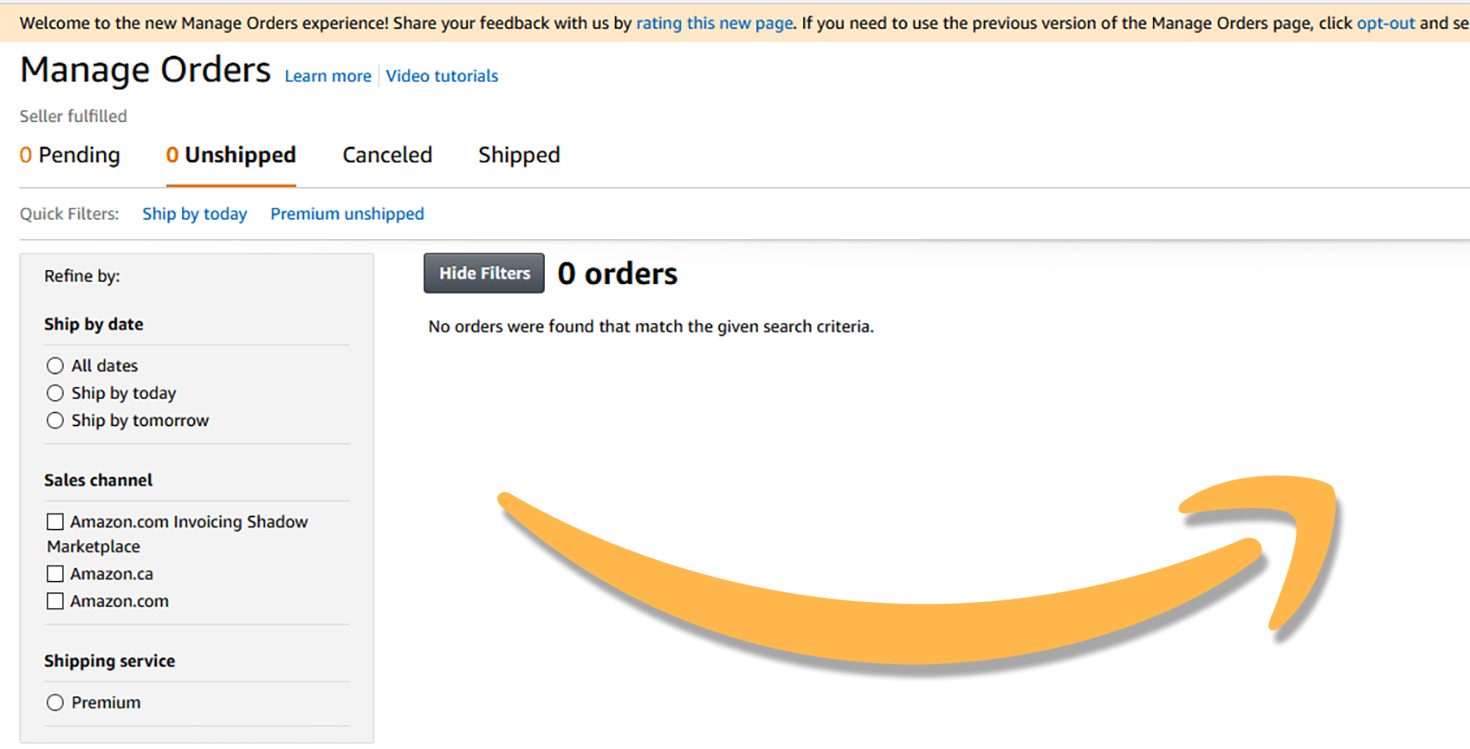
Your personal Manage Orders page provides a customizable view of all orders on all sales channels; you can view all orders within a given date range, or use Search to filter specific order types.
Additionally, this tool can perform a variety of order-related tasks, such as printing packing slips, confirming shipment, or issuing refunds.
Amazon Order History Reports
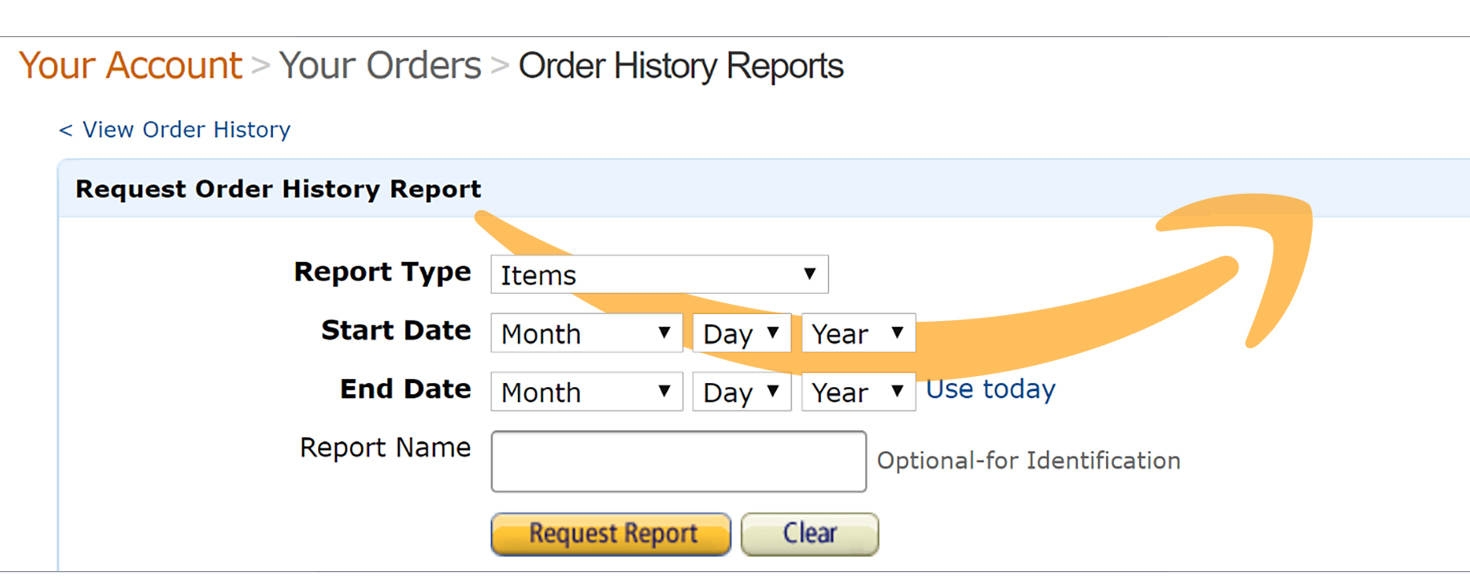
The Order Reports tool provides fulfillment information for multiple orders within one unified report. From Amazon Seller Central, you can schedule Order Reports to run automatically, or you can opt to run just one report at a time. Either way, reports can be accessed around the clock no matter where you’re logged in, so long as you’re using your business account.
Plus, you can retrieve information for both FBA and seller-fulfilled orders, including order status, fulfillment center data, metrics, and other pertinent item details.
Amazon Marketplace Web Service
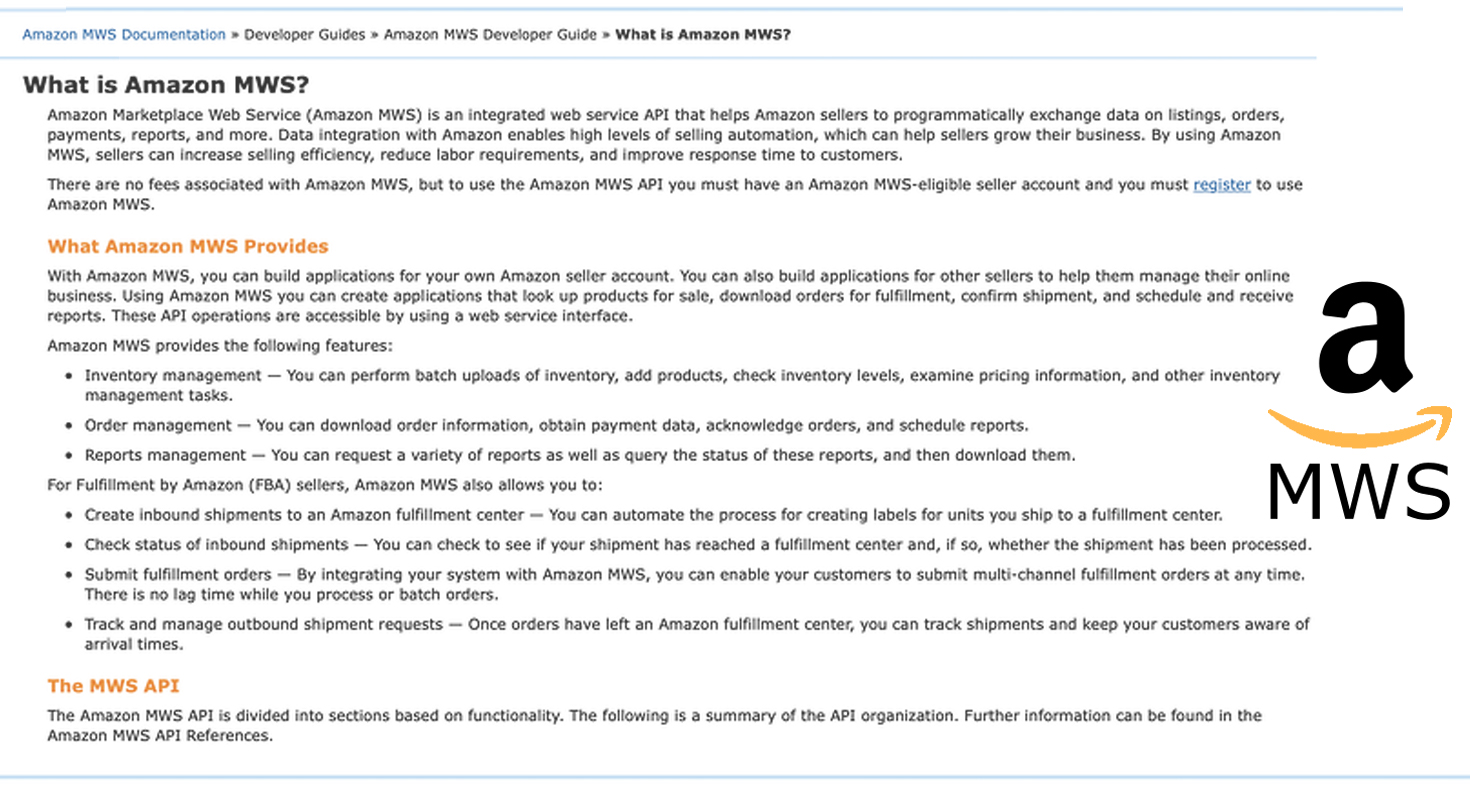
Amazon Marketplace Web Service (MWS) is an integrated web service API, which helps sellers automatically exchange information on Amazon listings, orders, payments, reports, and so on. By using this automation with MWS, merchants can increase efficiency, reduce labor requirements, improve response times, and ultimately, grow their business.
While there aren’t any fees associated with this tool, you’ll still need an Amazon MWS-eligible seller account, and you’ll have to register to use the service, as well.
Benefits of Third-Party Amazon Inventory Management Software
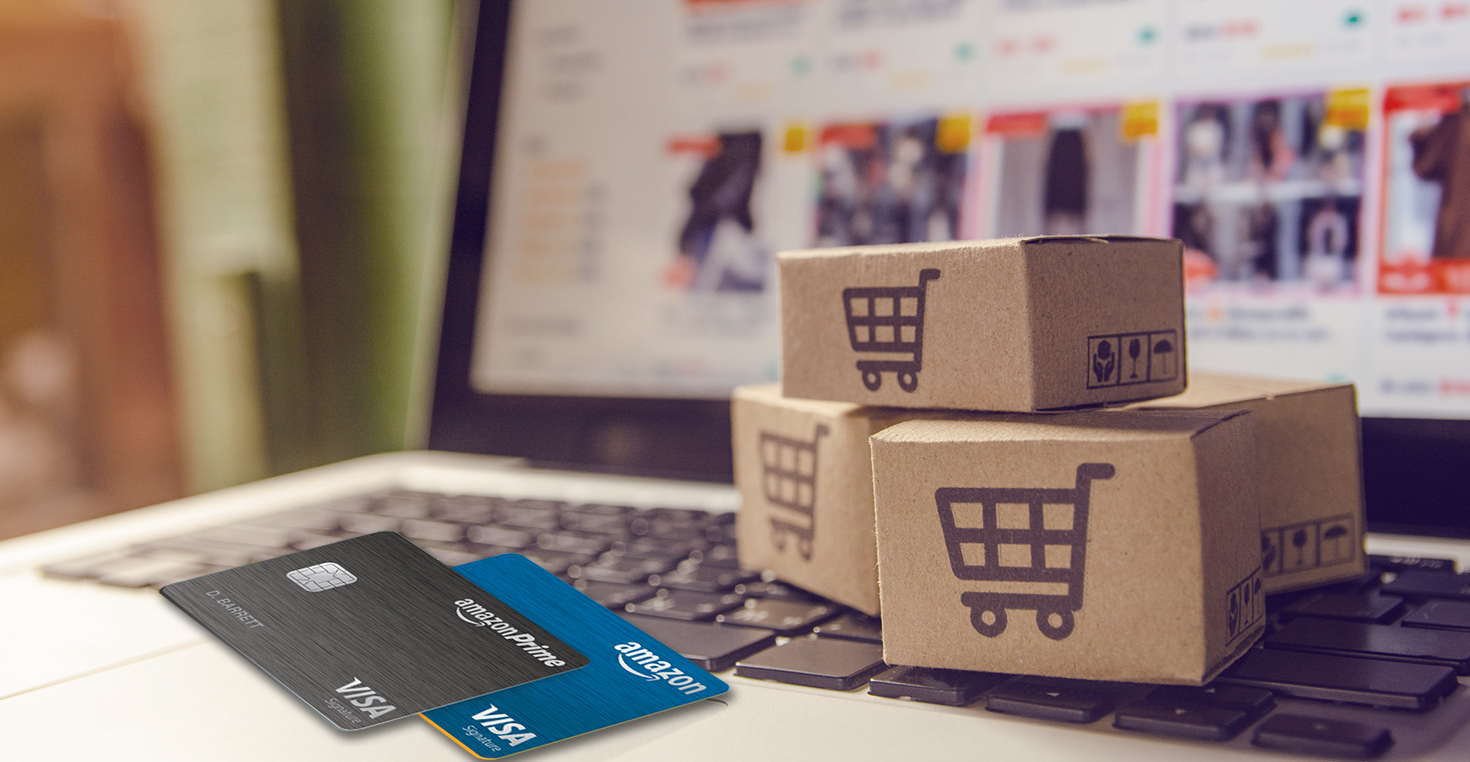
With smart order management solutions, any Amazon seller can elevate their business and improve processes throughout their supply chain. By using Amazon order management software, shop owners can consolidate all of their orders into a single platform, and leverage superior organization and functionality to accelerate their growth.
Manage Multichannel Orders in One Place
When you can manage all sales channels from the same dashboard, you’ll reap some major ecommerce rewards. Not only can you resolve potential errors within your orders, but you’ll have the ability to sync inventory for multichannel sales, purchase orders, and more. Sourcing all relevant order info in one place is not just convenient, it’s powerful.
Amazon order management software makes it possible to streamline multichannel selling, take control of your stock levels, and meet customer demand with ease.
Integrated Amazon Inventory Management & Amazon Order Management
Inventory management is all about knowing what’s sitting in your warehouse and where that stock is located at any given time. With that said, if your stock counts aren’t integrated with an order management system, you’ll miss out on the opportunity for major inventory optimization. Thanks to Amazon order management software, sellers can gain a competitive edge and the ability to exceed their customer’s expectations.
By implementing integrated inventory and order management solutions, Amazon retailers will experience the benefits of real-time updates and transparency on all customer orders.
Superior Organization & Functionality
Managing a large order volume or an unexpected spike in demand is time-consuming and stress-inducing, to say the least. While you always hope your store and your sales take off, if you don’t have the necessary organization or functionality to accurately fulfill orders, this surge can feel like somewhat of an ecommerce curse.
The advantage of using Amazon order management software is staying highly organized as order processing piles up, and having the bandwidth to fulfill said orders on time, every time.
Integrations with Your Other Ecommerce Platforms
The fact that Amazon can integrate with other ecommerce platforms, like eBay, is what really sets it apart and takes its marketplace to a whole new level. When Amazon merges with additional software, shop owners enjoy an all-inclusive solution to sell and ship goods more efficiently. Using supplemental integrations with your existing Amazon account, you can achieve a superior workflow across all channels and deliver quality customer service with every order.
9 Best Amazon Order Management Software Solutions
To be successful as an Amazon seller, proficient order management software is a must; luckily, there is a myriad of tools available to help your brand rise to the top in this competitive scene. We’ve rounded up the best order management solutions that are essential to optimizing your Amazon store and ensuring you never run out of stock or turn away potential customers.
1. Skubana Multichannel Inventory Management for Amazon
Skubana is the ideal system for multichannel, multi-fulfillment sellers who need a comprehensive view of their sales and order fulfillment data, as well as automated supply chain management for every SKU across every channel. Skubana’s inventory and order management software synchronizes data from sales channels, CRM, warehouses, 3PLs, and POS systems so retailers can minimize their storage costs, free up capital, and breathe life into their cash flow.
When you choose Skubana for Amazon, you can track your inventory levels, deliveries, sales, and orders originating from your Amazon sales channels and more. With Skubana, Amazon sellers can import FBA orders and inventory to obtain the most accurate customer data and analytics - and forecast per FBA warehouse to see detailed information like buy box price, units sold, and sales velocity
With its capacity to automate inventory updates, inventory tracking, and financial reporting, it’s safe to say Skubana’s unified platform is the best way to solve multichannel challenges with a singular focus.
2. Daasity
Daasity’s software was created for non-technical users, meaning their inventory analytics are easy to understand and apply to your daily operations. With Daasity, retailers can move beyond basic reporting, and instead, access holistic sales data and insights that are fundamental to growth. This system gives companies a clear view of their performance across all channels, so they can maximize profits, cut costs, and drive revenue across the board.
Daasity has found numerous brands struggle to combine Amazon sales data with their other sales channels for a complete view of their business, which is why they’ve included Amazon Seller Central in their flagship product (D2C Analytics Suite). With this integration in place, Daasity will take your historical data and combine it with your other sales channels for enhanced clarity around what your inventory is doing.
“While we’re sleeping, Skubana is crunching large volumes of moving data in real-time, and always calculates the right quantity at the right time. It automates half our operations and accurately informs the rest.” - Dustin Alexander | Logistics, Deathwish Coffee
3. Scout topShelf
Scout’s convenient topShelf inventory management system offers users full visibility and validation on every customer order. This software boasts a range of useful features, including both barcode scanning and RFID technology. Scout supports store owners in managing their entire product catalog, generating barcode labels, and printing directly from a mobile device.
With the topShelf integration for FBA sellers, shipping your products becomes exponentially easier. Scout’s software bridges multiple fulfillment channels and warehouses to cover merchandise stored in Amazon’s warehouses in the full inventory count. In other words, inventory quantities stored with Amazon are reflected in topShelf’s reporting tools, making shipping considerably more efficient.
4. StoreAutomator
StoreAutomator has been designed for online merchants who need help with listings management and inventory repricing, especially those who have multiple selling channels or outlets. Using the StoreAutomator platform, retailers can gain full oversight of their product catalog, and create product listings from scratch all on one dashboard.
With StoreAutomator’s sophisticated software features, brands have the power to fine-tune their product listings on Amazon. In addition, Amazon sellers who team up with StoreAutomator can enjoy flexible selling for inventory with multiple SKUs, achieve inventory control through catalog management, and mobilize data templates and mapping to boost sales.
5. Inventory Planner & Forecasting
Inventory Planner is a go-to platform for forecasting customer demand, creating purchase orders, optimizing stock for multiple warehouses, and customizing reports for greater intelligence. This software is optimal for ecomerce businesses with broad forecasting needs, and for those who want to capitalize on automatic replenishment recommendations that simplify the entire reordering process.
Inventory Planner’s forecasting can also be used for managing FBA and FBM with combined sales channels. If you’re constantly guessing which products to buy for your Amazon store, Inventory Planner can utilize your sales history to see what product lines are selling well, what styles are in demand, and what SKUs are making the best margins.
6. Inventory Source Warehouse Dropshipping
Inventory Source is an inventory management software specializing in monitoring, integrating, and updating product data from your dropship suppliers to your preferred sales platform. The Inventory Source system can automatically upload products, sync inventory, and route orders from dropshipping suppliers to nearly any online store or marketplace.
When Amazon and Inventory Source come together, retailers can integrate their supplier’s inventory to automatically upload product data and sync inventory quantities. Dropship sellers who want to streamline their multi-warehouse order routing to their suppliers and 3PL warehouses could benefit greatly from this order management pairing.
7. QuickBooks Online
By partnering with QuickBooks Online, small businesses and midsize companies alike can reduce the number of hours spent managing their finances. This cloud-based software makes it easy to accept payments, pay bills, and implement the payroll functions integral to your everyday operations. What’s more, QuickBooks provides accurate insights into the value of your inventory, the cost of goods, and the fluctuations in your cash flow.
If you have an Amazon Business account, you can connect it to QuickBooks for improved accounting, reconciliation, inventory tracking, and Amazon SKU profitability. This integration is a great way to save time and keep your books up to date, by automatically configuring all types of Amazon FBA and seller-fulfilled transactions and fees.
8. SkuVault
SkuVault users can connect all of their channels, organize their own warehouses, and manage their inventory with increased precision. The SkuVault system supports you in making data-driven decisions, which translates to improved selling, picking, and shipping -not to mention, a better customer experience, as well. And with the SkuVault app, you can construct detailed reports to guarantee you never oversell or run out of stock on any SKU. Visit SkuVault on Supply Chain 24/7.
Read: What is Ecommerce Inventory Management?
The SkuVault integration with Amazon syncs your FBA inventory in real-time, to automatically reflect the physical inventory in your warehouse on your Amazon store. In addition, SkuVault will pull product data and order details from Amazon, and create efficient pick lists with direct routes that are sure to save you time and money.
9. Shopify POS
Shopify POS is a popular system for managing your business, marketing to customers, and selling everywhere you want to be. With its advanced inventory features, Shopify users can generate purchase orders and transfer stock based on previous performance. Plus, with the Shopify mobile app, you can quickly adapt to sales trends with unified analytics that blend in-store and online sales.
When it comes to integrations, Shopify’s Amazon connector helps retailers import products from their Amazon account to a Shopify store and then maps the product movement to manage inventories on both ends. This way, merchants can better track product inventories on either platform and can carry a wider variety of SKUs than with a standalone service.
Considering the size and scope of the Amazon marketplace, order management might feel a bit confusing or complex. If you have lingering questions about Amazon order management, hopefully, these answers will provide some much-needed clarity.
“We were at a point where we could not grow at all. When we got on Skubana, we went and doubled the company without any pain.” Patrick Barnhill, Founder of Specialist ID
Amazon Order Management FAQs
How do I manage orders on Amazon?
To manage orders on Amazon, simply login to your seller account, click Orders, and then click Manage Orders. From the Manage Orders page, you’ll have a fully customizable view of all your orders on all sales channels.
What order management system does Amazon use?
Amazon’s order management system uses tools like Manage Orders, Order Reports, and Marketplace Web Service to pull orders from multiple channels into one dashboard. When Amazon order management is integrated with third-party software, retailers can enjoy an all-inclusive ecommerce solution to sell and ship goods more efficiently.
What is order entry?
Order entry describes the actions needed to record a customer's order in an order handling system. When you enter a sales order into your management software, the system automatically enters relevant information related to the customer, the item, and its pricing.
Amazon’s Order & Inventory Management Summary
Inventory management comprises the processes and activities that take place between the moment you obtain your inventory and the moment you sell it to the final customer. Small tweaks to inventory management can have a big impact on your bottom line for better or for worse.
Done well, inventory management can boost sales. Missed opportunities, on the other hand, can mean lost revenue.
Source: Amazon Order Management Explained + 9 Best Solutions | Skubana | Exteniv
About the Author
Matthew Rickerby is the Director of Marketing at Skubana (an Extensiv company), the leading solution for multichannel, multi-warehouse D2C brands. For the past ten years, he’s covered e-commerce topics ranging from SEO to supply chain management.
Related Resources
The Ecommerce Technology Lifecycle Report
In this white paper, you will learn what technologies your warehouse must implement to remain competitive and offer a seamless ecommerce experience to your customers. Download Now!
Why Connected Commerce Will End the Reign of Enterprise Resource Planning
Find out in our whitepaper how new connected commerce software integrates order, inventory, and warehouse management to change how brands can approach and scale with software. Download Now!
More Content from Extensiv
Read the Article: Three Predictions for Ecommerce Brands & Third-Party Logistics Providers in 2023
Article Topics
Extensiv News & Resources
Tightening up on inventories Extensiv’s annual 3PL Warehouse Benchmark Report finds 70% of 3PLs face higher labor costs 2023 State of the Third-Party Logistics (3PL) Industry Report 2023 State of the Third-Party Logistics Industry Report Three Predictions for Ecommerce Brands & Third-Party Logistics Providers in 2023 Why Connected Commerce Will End the Reign of Enterprise Resource Planning Extensiv secures $80 million loan from Runway Growth Capital More ExtensivLatest in Supply Chain
Is the Trailers as a Service (TaaS) Model Right For Your Business? Why Grocery Shoppers are Leaving Stores and Buying Their Food Online Is There a Next Generation of Truckers? Data Reveals Grim Outlook A Look at Baltimore’s Key Bridge Collapse—One Month Later European Parliament Passes Law on Supply Chain Accountability Baltimore Continues Bridge Recovery With Opening of New Channel How Shippers Can Prep for Hurricane Season More Supply Chain